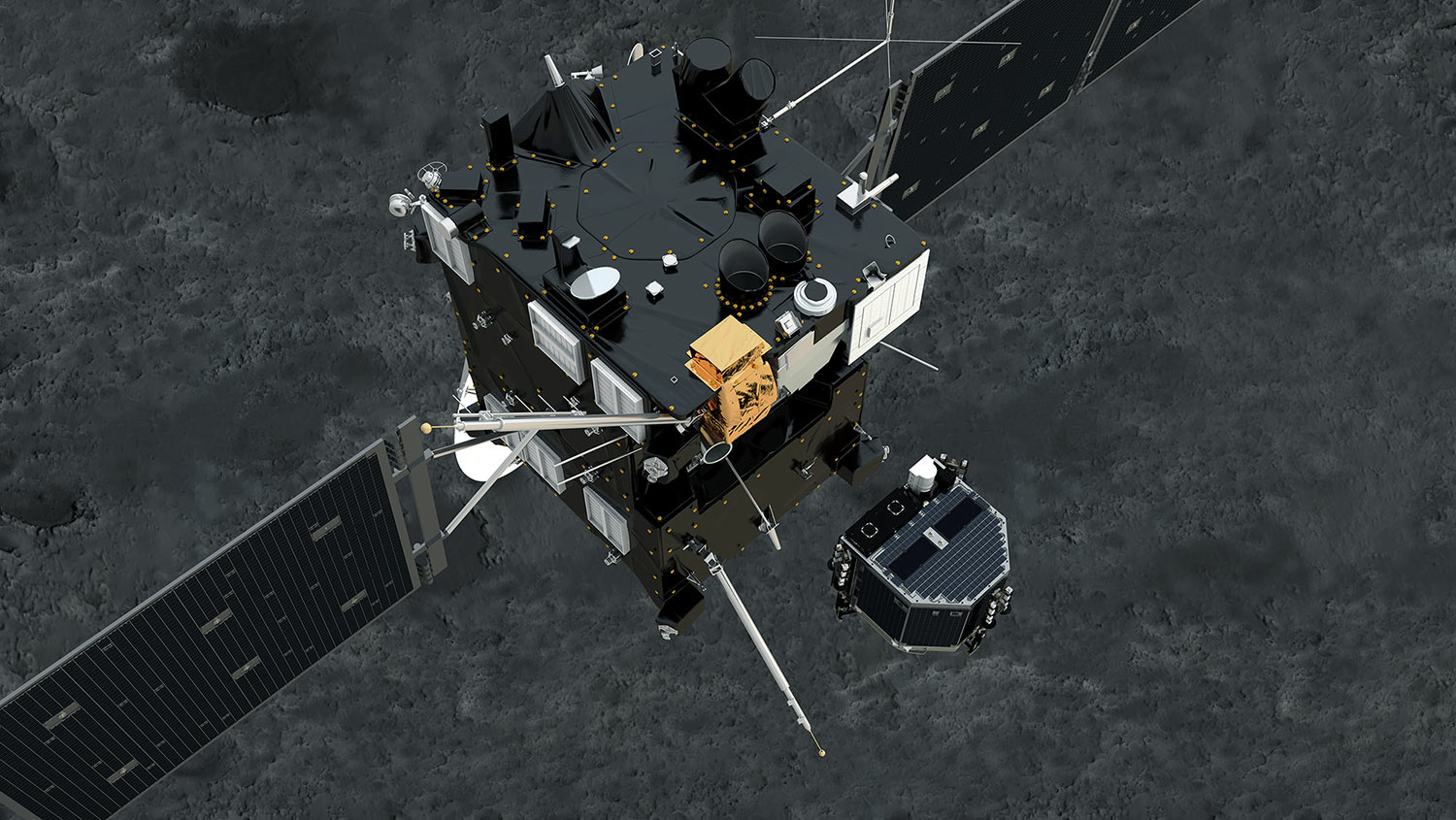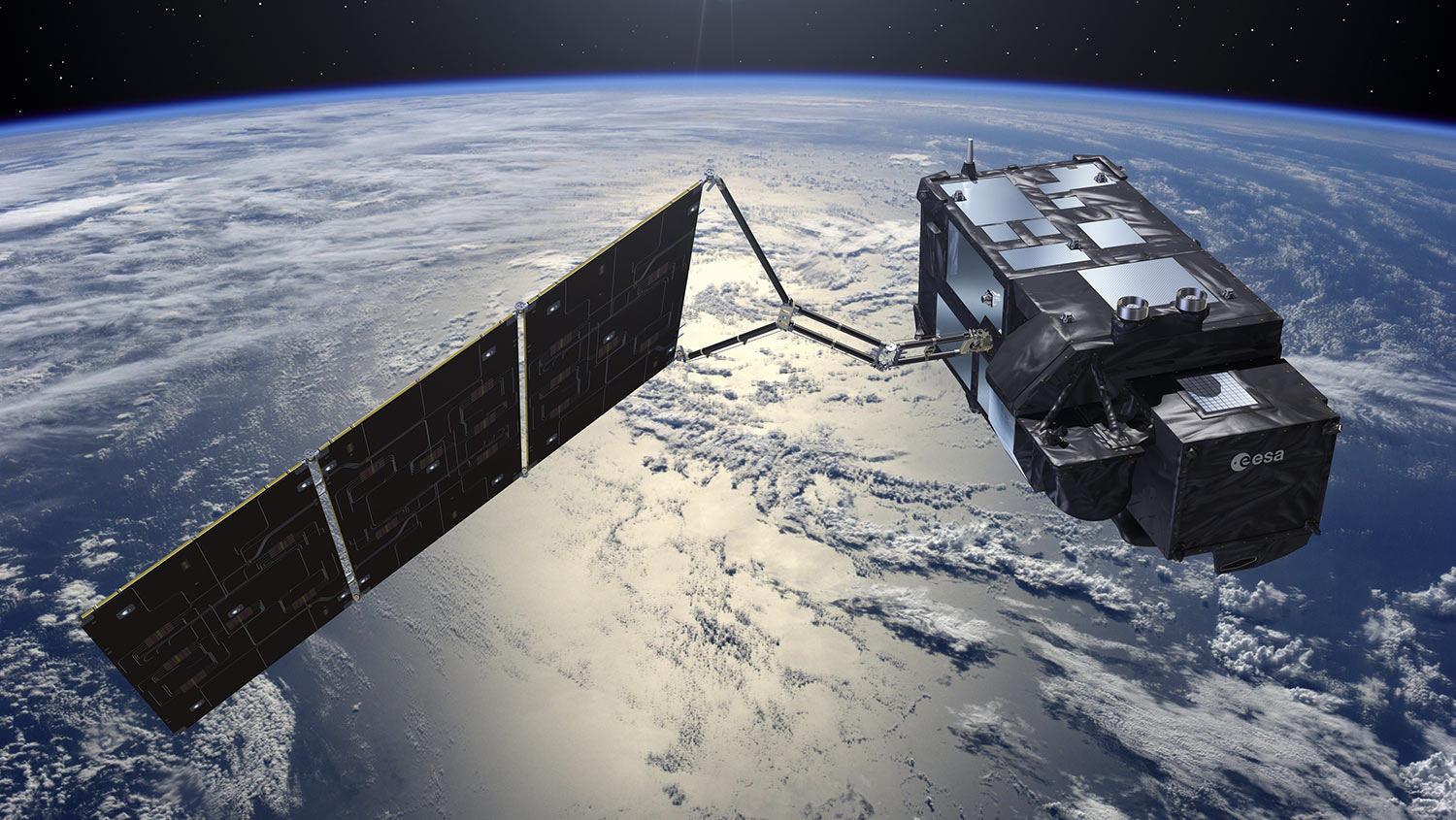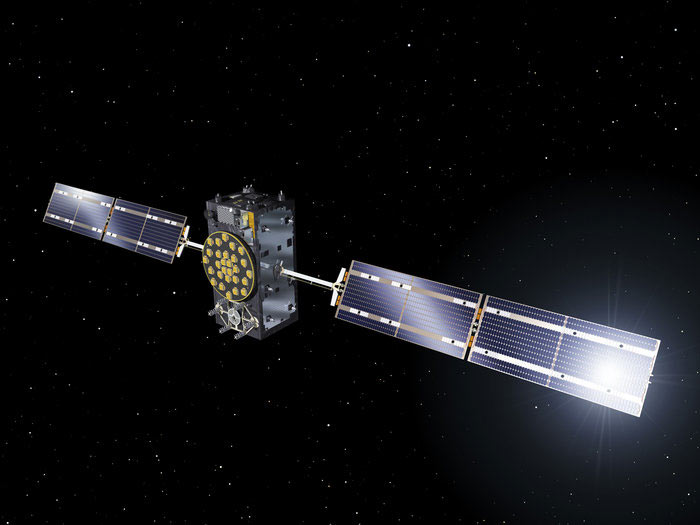ExoMars
Two missions looking for life on Mars. Trace Gas Orbiter and a Schiaparelli lander were launched in 2016, an orbiter, the largest spacecraft to ever reach Mars, is focused on studying Martian atmosphere, while Schiaparelli lander tested entry and descend technology, however failed to successfully land on a surface. Second mission will be launched in 2020. It will include the surface platform and a rover with sub-surface drill, taking samples from further down below the surface than any other probe to date.
| ExoMars 2016 Launched 14 March 2016 Planned end of mission December 2022 |
ExoMars 2020 Planned launch July 2020 Planned end of mission early 2021 |
||
| Trace Gas Orbiter Launch mass 3 732 kg |
Schiaparelli Launch mass 600 kg |
Rover Launch mass 310 kg |
Surface Platform Launch mass 827.9 kg |
Rosetta
Historical mission to the comet, ESA’s space probe was the first one to orbit a comet, study it in depth and the first one to send a lander to the surface. A mission of records and firsts is teaching us about the origins of solar system and its evolution, as well as life of the comets themselves. Lorem ipsum dolor sit amet, consectetur adipiscing elit, sed do eiusmod tempor incididunt ut labore et dolore magna aliqua. Ut enim ad minim veniam, quis nostrud exercitation.
| Rosetta Launched 2 March 2004 Planned end of mission 30 September 2016 Launch mass 2 900 kg |
Philae Landing 12 November 2014 End of mission 27 July 2016 Launch mass 97.9 kg |
Copernicus (Sentinel satellites)
Copernicus is an innovative, large scale Earth Observation programme funded by the European Union. With open data access it gave birth to countless new companies and studies from climatology to assisting farmers in getting the most out of their crops. Currently in a process of deployment is a series of Sentinel satellites that will monitor various aspects of our planet.
| Sentinel 1 First launch 3 April 2014 Launch mass 2 300 kg |
Sentinel 2 First launch 23 June 2015 Launch mass 1 140 kg |
Sentinel 3 First launch 16 February 2016 Launch mass 1 250 kg |
| Sentinel 4 Planned launch 2019 onboard MTG-S meteorological satellite Mass 140 kg |
Sentinel 5 Planned launch 2020 onboard MetOp-SG meteorological satellite Launch mass 3 000 kg |
Sentinel 6 Planned launch 2020 Launch mass 1 000 kg |
Galileo
Satellite navigation system built and deployed by Europe. Currently the only civilian sat nav system in the world that offers global coverage (GPS, GLONASS and BeiDou are military systems, even though they are open to public). Galileo is a programme of the European Union, managed by European Commission, developed and executed by European Space Agency.
| Galileo FOC (Full Operational Capability) First Launch 22 August 2014 Orbit 23 222 × 23 222 km × 56° Launch mass 732.8 kg |
Galileo IOV (In-Orbit Validation) First Launch 21 October 2011 Last Launch 12 December 2012 Orbit 23 616 × 23 616 km × 56° Launch mass 640 kg |
Other missions
We also covered few other missions, notably NASA’s New Horizon, the first spacecraft to visit Pluto, and Gaia, mission to create the most detailed map of stars in our galaxy.




